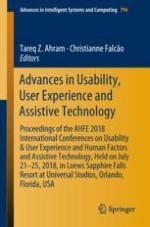2019 | OriginalPaper | Buchkapitel
In the Journey of User Center Design for the Virtual Environment
verfasst von : Norma Antunano
Erschienen in: Advances in Usability, User Experience and Assistive Technology
Aktivieren Sie unsere intelligente Suche, um passende Fachinhalte oder Patente zu finden.
Wählen Sie Textabschnitte aus um mit Künstlicher Intelligenz passenden Patente zu finden. powered by
Markieren Sie Textabschnitte, um KI-gestützt weitere passende Inhalte zu finden. powered by
